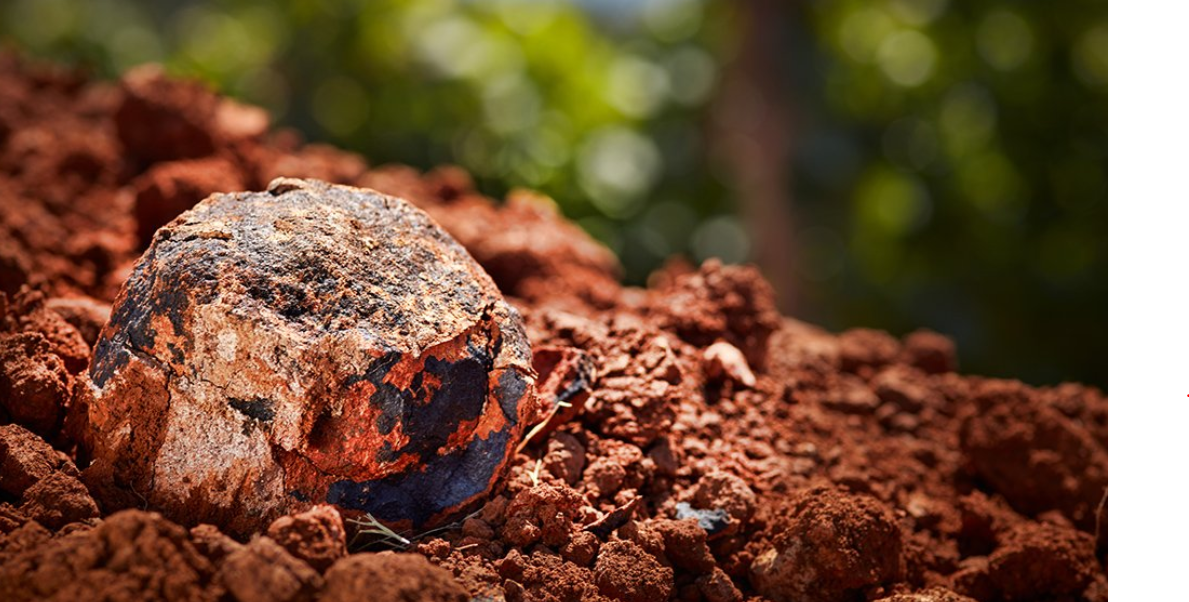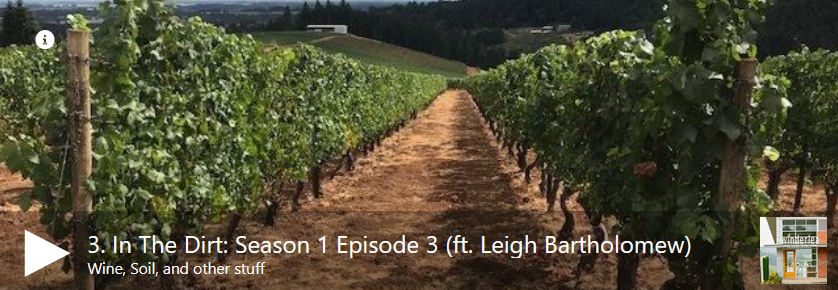Oregon wine country has several factors to thank for its world renowned Pinot Noir. From our rainy climate, to longer summer days and talented winemakers, it takes a perfect storm of various elements to produce what you sip at a tasting. But there is one factor without which none of the other steps would be possible, and that is the base in which our grapes are grown. That’s right, today we’re talking about soil. As many Oregonian winemakers point out, delicious wine comes from delicious grapes, and no matter the varietal type, vintage, location, or elevation, grapes require fertile soil. But don’t take our word for it! Leigh Bartholomew, the Director of Viticulture at Results Partners LLC, was kind enough to chat with us about the different types of soils in Oregon and their role in our geological history.
Leigh has been farming grapes in the Willamette Valley since the year 2000, including fourteen years as a Vineyard Manager at Archery Summit Winery. She then left to join the team at Results Partners LLC, a vineyard development and management company that works with wineries all around the Valley. This time has given Leigh the unique perspective to see and experience all sorts of different vineyards and AVA’s (American Viticulture Areas). So it’s not a surprise that it didn’t take long for her to become even more involved, joining the Eola-Amity Hills Winegrowers Association. “It only made sense,” she told us, “to keep informed with what’s going on, who’s doing what, and how best I can integrate my work.” Read below to learn all the wisdom that Leigh shared with us, and be ready to show off some wine-soil knowledge at your next dinner party!
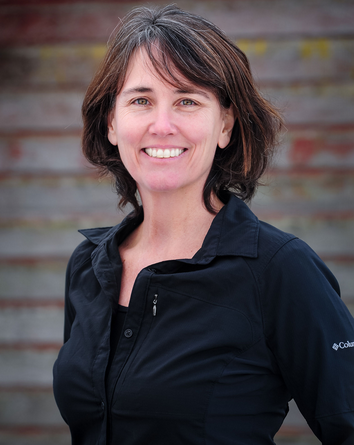
Leigh is the Director of Viticulture at Results Partners. Photo credit: Results Partners.
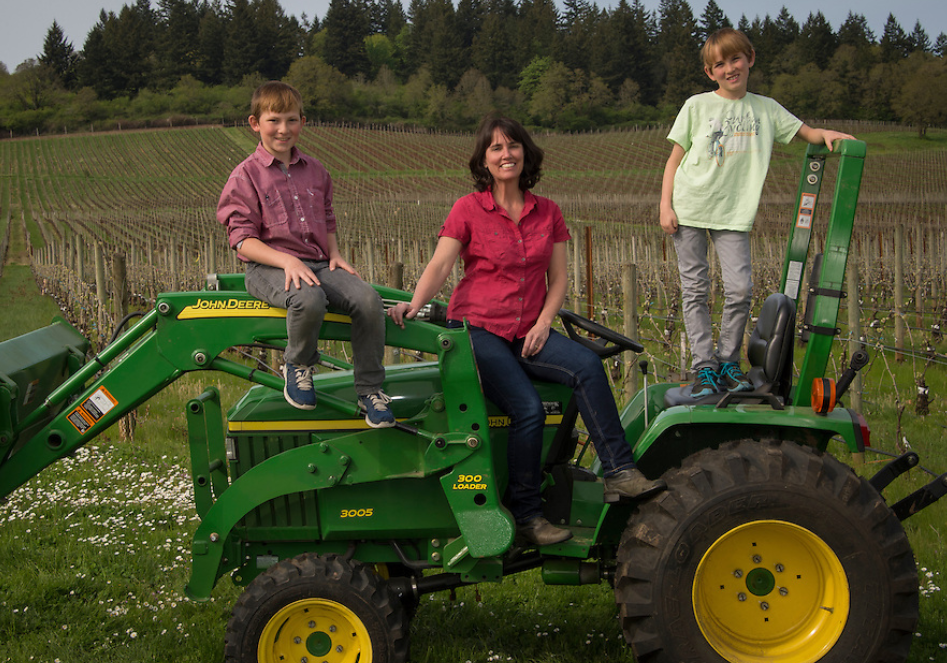
Leigh is also owner and viticulturalist at DominoIX, a winery founded on family, community and excellent wines! Photo Credit: Anderson Photography
Independence Hotel (IH): What part of your work with the Eola-Amity Hills Winegrowers Association brings you the most joy?
Leigh Bartholomew (LB): When it comes to the Vineyard, it’s the diversity of the climate, which is significantly different in the Eola-Amity Hills. (It’s generally about 5 degrees cooler in Eola-Amity than let’s say The Dundee Hills.) And from an AVA perspective, the amount of participation in the group itself: the number of people who come to the meetings is really impressive and shows you the amount of enthusiasm people have for their sites and for winegrowing. Everyone here feels lucky, including me.
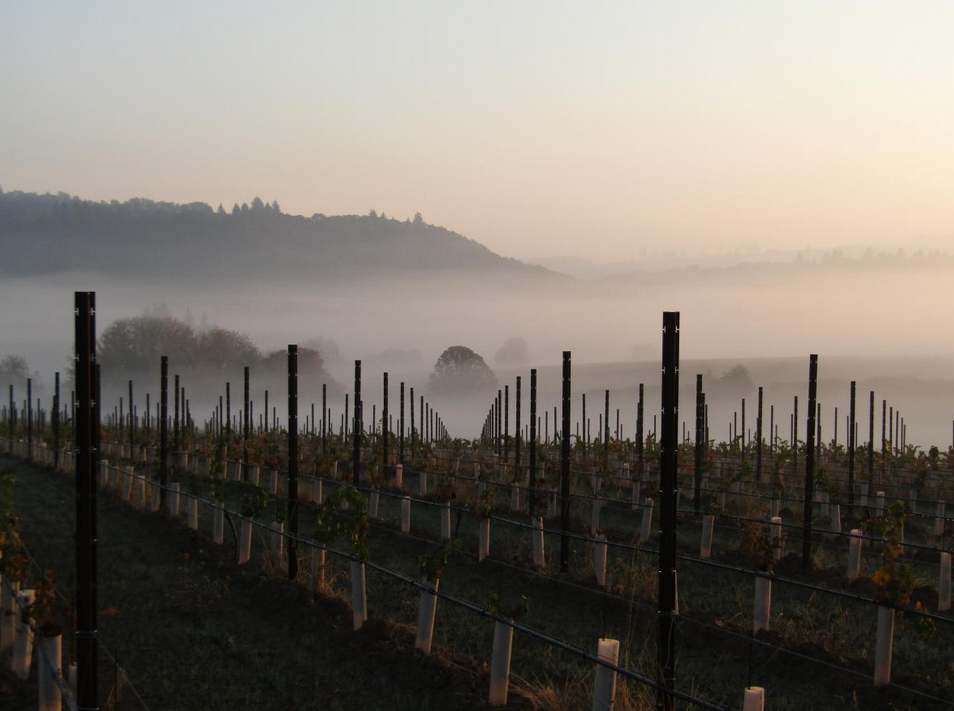
The weather is an integral component in the winemaking process. Photo Credit: Dominio IV
IH: What are the different kinds of soils in the Willamette Valley?
LB: In principal, we have either soil from basalt (volcanoes) or from filaments (marine sediments from the ocean floor). And the way we work with them both is pretty different. The vines that are grown from basalt soil are much more vigorous and grow more wildly, while the vines that grow from sediment-based soil are more restrained. Of course, I’m really generalizing here, but they have less water holding capacity– less clay –so less available water, which means you need to do a little bit more with them come the summertime. And we use various covered crops when dealing with each soil. In the volcanic soil we might not do any tillage, where in the sediment soil tillage might be necessary. But we’re also still learning how to farm them differently. As time goes by we’re getting more nuanced. Smarter.
IH: What type of soil type is your favorite?
LB: I’m more comfortable with the volcanic soil because that’s where I got my start; that’s my background, but there are excellent examples of wine from all soil types. And within the basalt and sediment soils there are lots of subcategories/sub-soils as well. (Shallow VS deeper soils for ex.) But I like them all. I can’t pick a favorite kid; that would be unfair.
IH: Can you taste the difference between soils?
LB: [*With a self-deprecating laugh*] No. Sometimes I taste it and don’t even know which country it’s from.
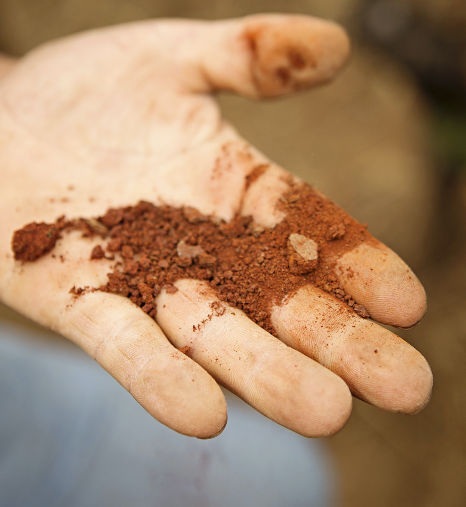
In the Willamette Valley, the soil was deposited by the Missoula Floods alongside a bedrock of ancient marine matter and myriad volcanic soils that are even older.
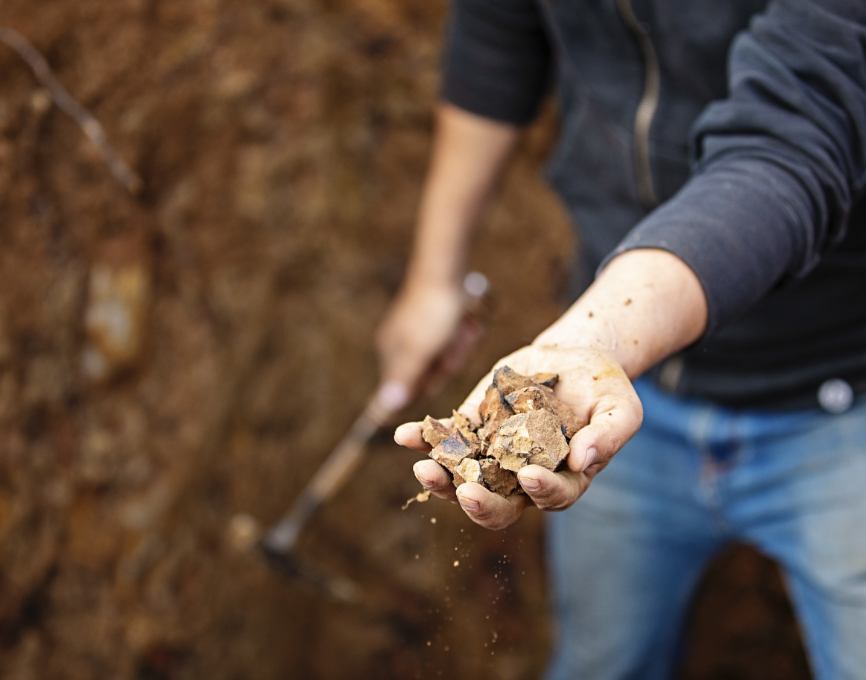
The rocks in the soil impact the way the vines grow as well as the flavors that we’ll find in the wine.
IH: Can you tell us a little bit about the Missoula Floods and their role in the geological history of the Willamette Valley?
LB: Sure! There was a big lake in Montana and the ice dam of that lake broke, flooding the Willamette valley with all of the minerals, soil, and water from its journey through Montana, Idaho, and Oregon. This fertile soil was then deposited in the Willamette Valley. And this happened many, many times. The ice damn built up and broke down. So we collected all of these soils from elevations at about 400 ft. and down. In other words, the Valley got really lucky to have all of that beautiful fertile soil, and today that is where we have a lot of nursery crops growing. We do also grow a lot grapes in the Missoula floods soils, they just tend to be vines that need to be watched and managed a little more closely because they take all of that extra fertile capacity to grow big vines. As a result, many people prefer to be up on the hillsides where you’re above those Missoula floods. But the Pinot Blanc from the flood soils is fantastic, so you can make really great wines there; you just have to be careful about how you do it.
Check out this mapping of the Missoula Floods, understanding geology and soil science is critical to winegrowing,
IH: How do you see Oregon wines evolving as the climate continues to warm?
LB: It depends on how far out you look. What we’re seeing right now is people are becoming more confident to explore more varieties beyond Pinot Noir, Pinot Gris, and Chardonnay. They’re starting to plant different things, which will be interesting for the future of Oregon wine. But we are still a long way away from not being able to grow our staples and an even longer way away from not being able to grow grapes at all. Last summer reached 116 degrees and our vines survived, and this year is already much cooler. We’ll just have to see how things go. But we’re looking at new varieties and new root stumps too: ones that might not be so impacted by warm temperatures and are a little more resilient. Beyond that, people are starting to install irrigation where it’s really hot [for better or worse] to try and help the stumps survive our heat waves. So we’re exploring our tools a lot more these days. Changing trellis systems a little bit more too, and creating more shade where we used to get rid of most of our shade. As the climate shifts, we’re paying attention and learning to change what we do have control over.
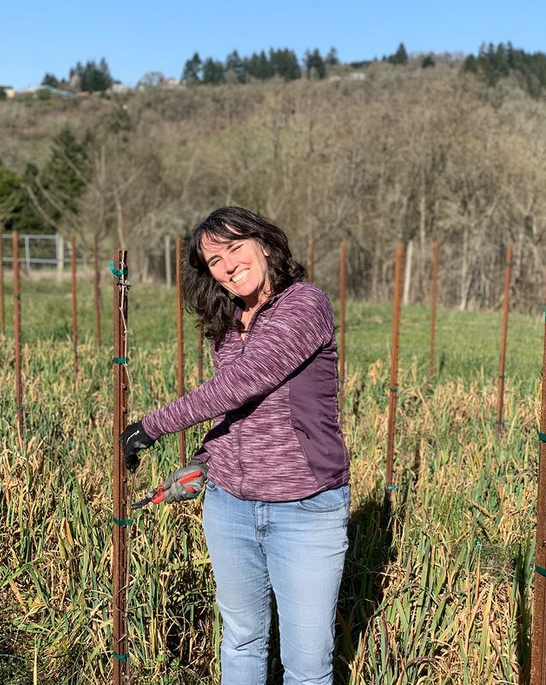
Matriarch of the vines at Dominio IV! Photo Credit: Dominio IV Instagram
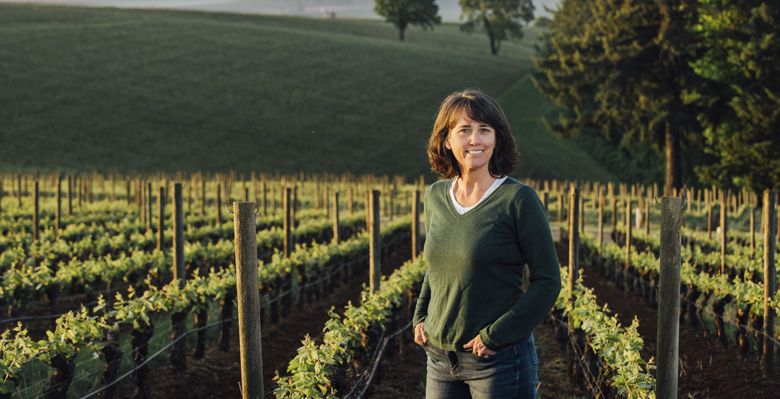
With so much knowledge and enjoyment of the science, Leigh also just seems to be “at home” among the vines! Photo Credit: Oregon Wine Press
IH: In addition to your other roles, you are also co-own your own winery in McMinnville, Dominio IV. What about that process has surprised you the most? And what has been your favorite part?
LB: I think most people get into the winery business because they love making wine or they love drinking wine or they love growing grapes, but not a lot of people get into it remembering that you have to love selling wine also, and you have to be good at it, because you can only make so much before your warehouse is full. Then you have to figure out how to sell it. So that’s been the biggest surprise… realizing and remembering that. My husband is better at it than me though. I’m more like “Oh you like it? Please take it!”
And the whole process is fun. I love watching my husband come up with new blends and seeing where each vintage wine takes you and what new things you might do with it. I also love giving it to people; watching them try it and having them love it. Seeing how people to respond is always fun.
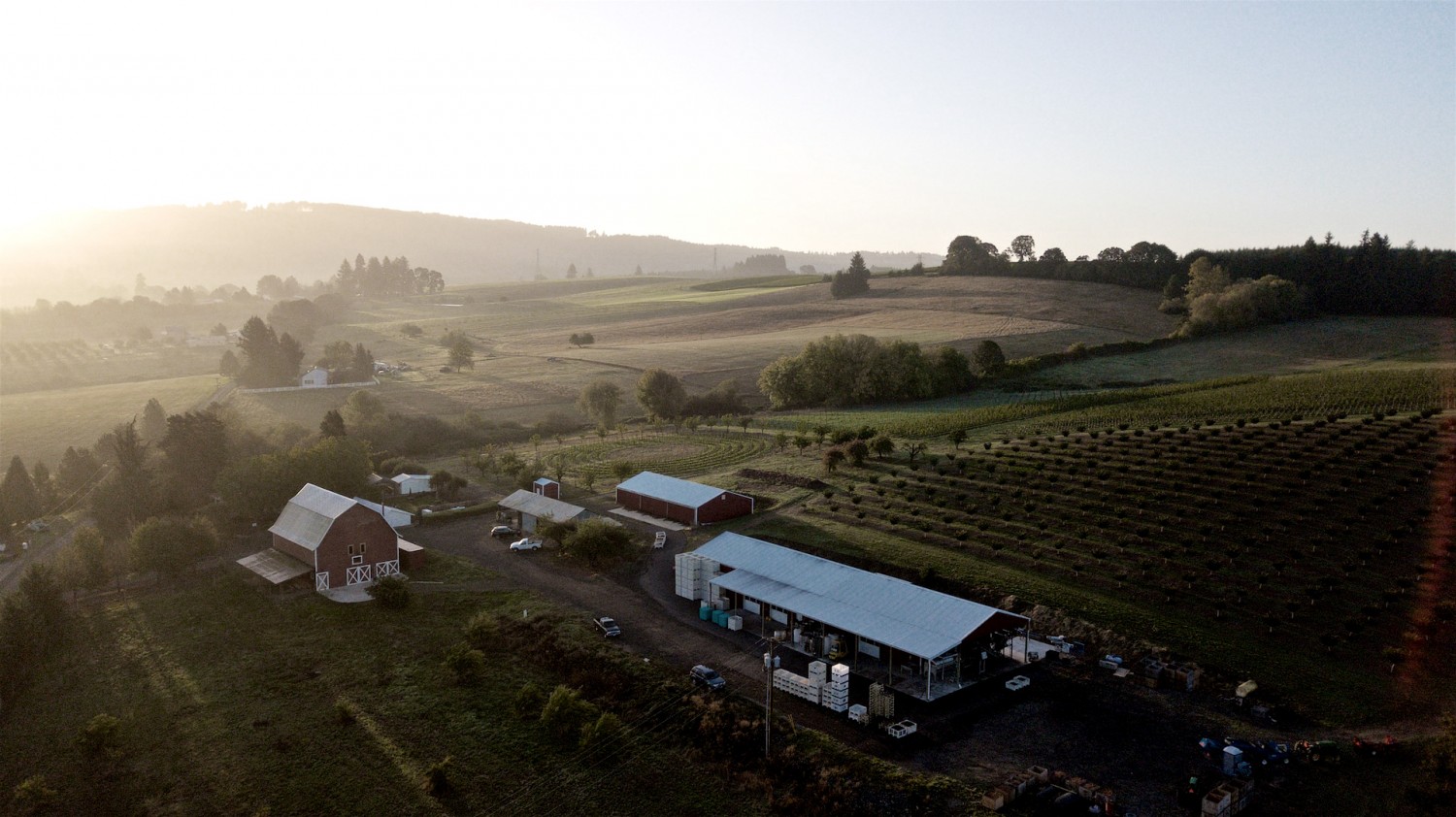

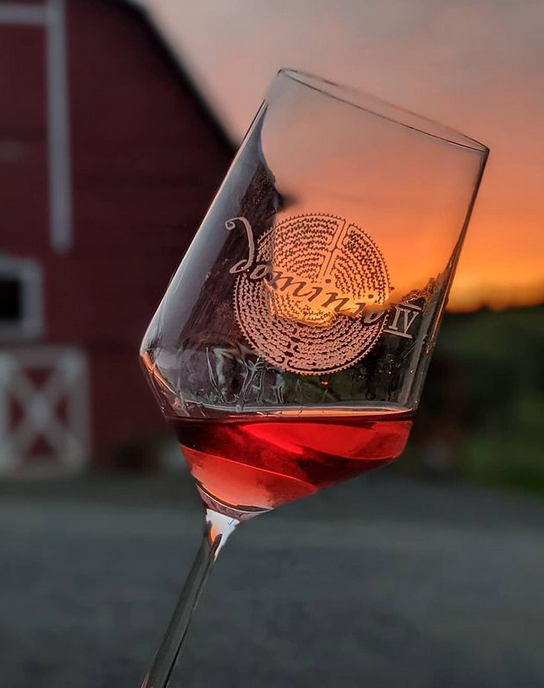
Top: an overview of Dominio IV’s tasting room in Carlton, where there is so much to experience and explore from their 1916 Farmhouse tasting room, a Cherry Orchard, and resident owls. Bottom: Dominio IV’s beautiful labels and a glass of wine with their bard in the background! Photo Credits: Dominio IV’s website and Instagram.
IH: Have you ever named a wine?
LB: Oh no. My husband is very creative, so that’s more his wheelhouse. I’m sure he’d let me do it for kicks because it would be funny to see me try, but he’s an artist and a writer. He actually writes a poem on the back of every label and therefore jokes, “he’s highly published”. But the ones he doesn’t write poems for he actually draws his tasting notes and that often becomes the label. The best example I can think of is for our “Imagination Series”. He took his tasting notes and created a beautiful drawing from them that makes the wine accessible for everyone. Because some people find wine descriptions intimidating, but everyone cam be moved by an image.
IH: Do you have a favorite wine?
LB: Outside of my own? No. I’ve worked with so many different vineyards and with so many different people it’s too hard to pick one favorite. I love the wines from the Eola-Amity Hills, and I work with a lot of wineries from there such a “Rose Hill” that’s owned by the Durant family, and Dave Paige’s “RPG” (that’s where the Pinot Blanc is). Both have delicious wines, but I would say that the Eola-Amity Hills AVA is definitely the darling in the wine industry right now. Everyone wants land there.
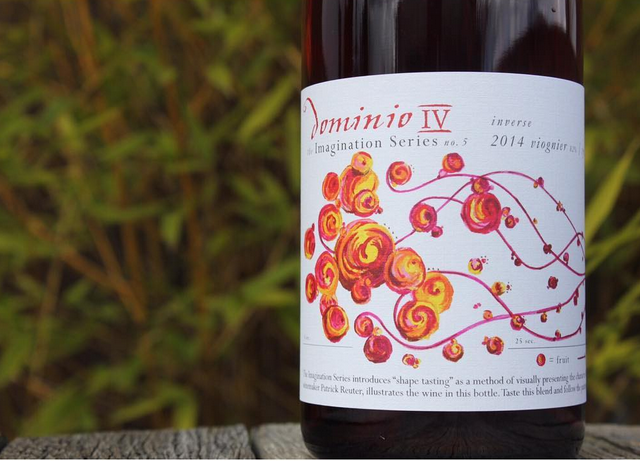

This series of wine uses shapes and colors to define what the wine is like on the palate over time. It’s a full sensory experience!
IH: Do you have a favorite Pinot Noir from Dominio IV?
LB: I love one called “The Black and Red.” It’s a blend that came from two vineyards, one in the McMinnville foothills that gives a lot of black fruit, darker flavors, and then one from The Dundee hills which is much more bright (full of red-fruit notes) and we put them together. That wine is always to my palate. It’s a 50/50 blend of soils too. The Dundee Hills is comprised of Basalt soil while the vineyard in McMinnville is sediment based. And the flavors reflect that. The sediment soils produce wines that struggle a little more in the summer, they’re not irrigated, and they don’t have as much access to available water, so they tend to make smaller productions with flavor profiles that are darker and deeper, and then of course you have the classic red fruit profiles that come from Dundee.
IH: Is there anything else you’d like to share that we haven’t asked about?
LB: Every vintage puts its thumbprint on the wine of the season and that’s the exciting part. We try to not screw that up by letting the season speak. We try to manage the vines specifically to each vintage. Of course, that’s s also what’s hard about wine because it’s much easier to do that in retrospect. As much as one can guess where Oregon wine is headed, each year you just have to check in and find out. What’s it like now? Then check again the next year, and then ten years after that, because it takes a long time to explore with grapes, and we only get one shot at it a year. So exploring early with trials is important. You get this trajectory of how things are going to age, but then you also just have to wait and see.
You can learn all about the wines from the Eola-Amity Hills at the winegrowers association website. Or better yet, sample wines from various soils during your next trip here. We at The Independence Hotel can’t wait to host you!
